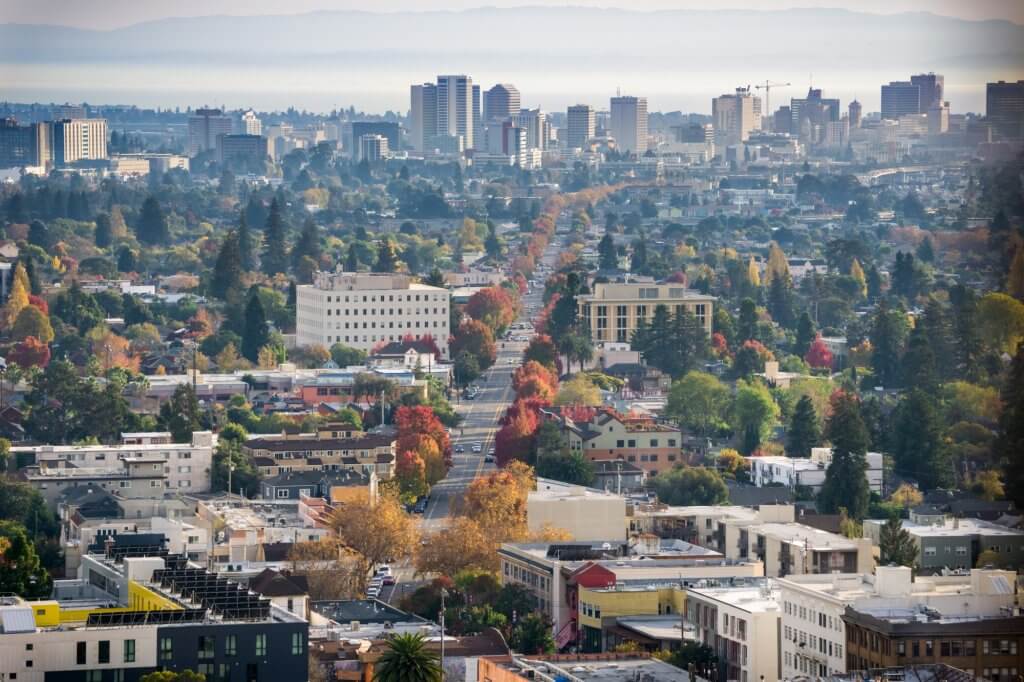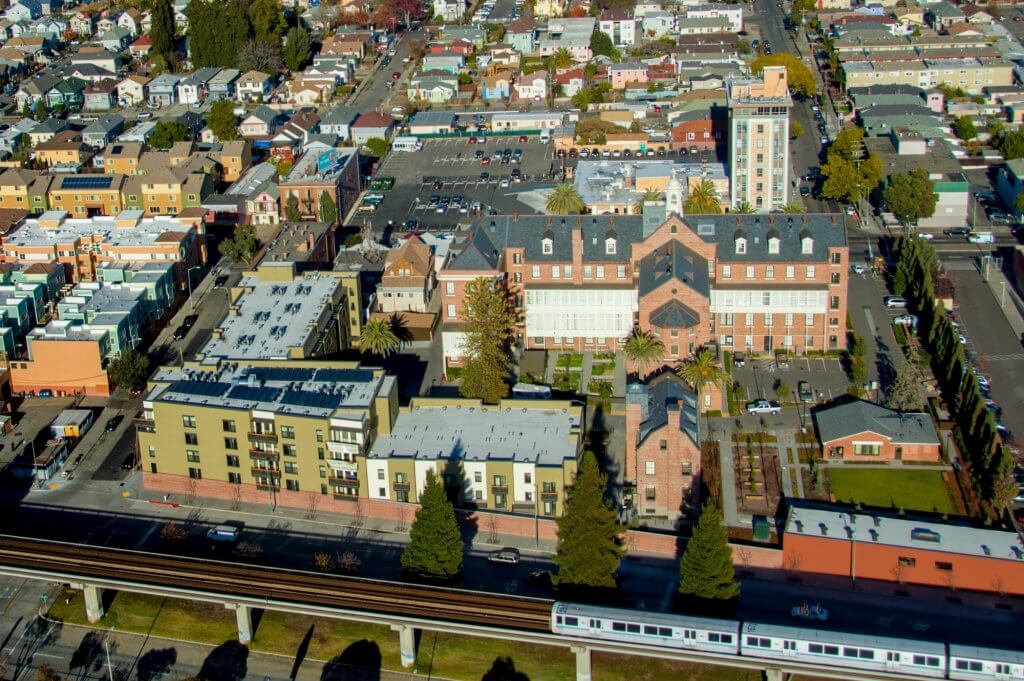New Amendments to SB 50 Change Approach to Identifying “Sensitive Communities”
Published On May 13, 2019
On April 24, SB 50 went before the Senate Governance and Finance committee. While it passed the committee 6-1, the resulting amendments made significant changes to the bill. Some of the biggest changes include what is essentially a carve out for smaller counties like Marin and Santa Barbara as well as a reduction in the number of bus stops that would meet the “high quality” transit requirements.[1]
In this blog, we focus on a third major change: the definition and implementation of the “sensitive communities” provision in the proposed law.
The goal underlying the “sensitive communities” provision in the bill is important. Due to longstanding patterns of exclusionary zoning and residential segregation, high frequency or fixed rail transit stops are often located in lower-income, communities of color. In addition, these communities’ voices have often been marginalized in planning processes, and in recent years, have experienced significant gentrification pressures. To account for this, SB 50 proposes to delay the implementation of its upzoning provisions in “sensitive communities” for five years, allowing these places to opt-in to a community-led planning process.[2] The purpose of delaying SB 50 implementation in sensitive communities is to allow for greater community participation in developing local strategies to meet housing needs as well as to protect vulnerable residents from displacement.
The challenge, as we’ve laid out in a previous brief, is how best to define and implement the “sensitive communities” provision in a way that effectively achieves these protection goals, without undermining the goal of increased supply and the potential for new affordable units as a result of the law’s inclusionary requirements.
The recent revisions to SB 50 show that policy-makers continue to grapple with this challenge.
First, the new bill language expands the number of metrics that could be used to define sensitive communities. The initial definition, released in March 2019, proposed to use TCAC’s “High Segregation and Poverty” designation for the majority of the state[3], while deferring to a local definition of “sensitive communities” in the Bay Area (established as part of the CASA initiative).[4]
In the new amendments, the bill refers to “potentially” sensitive communities, and includes three additional metrics that could be used to identify these places: TCAC’s “Low Resource” tracts[5], SB 535 “Disadvantaged Communities[6],” and Qualified Census Tracts[7] as identified by the US Department of Housing and Urban Development. The bill also states that the legislature would consider “additional communities as potentially sensitive communities in inland areas, areas experiencing rapid change in housing cost, and other areas based on objective measures of community sensitivity.”
The impact of this changed language is substantial: even without considering the additional communities provision, 43.9 percent of census tracts in California could be designated as sensitive communities (3,540 out of 8,057 census tracts), compared to 13.7 percent of tracts based on the March 2019 definition. Much of this increase comes from adding the TCAC “Low Resource” tracts (which includes 755 tracts not captured in any other definition) and SB 535’s Disadvantaged Communities (which includes 498 tracts not captured in any other definition). In our accompanying interactive map, stakeholders can look at the impact of the changes in definition for the cities in which they live, as well as turn on and off different definitions cited in the bill.
Second, the May amendments propose a participatory process for finalizing which areas would ultimately be designated as sensitive communities and be subject to delayed implementation. Modeled on the CASA process in the Bay Area, regional councils of governments (or county boards of supervisors) would engage local stakeholders to develop a map of sensitive communities by July 2020—this map would be reviewed by California’s Department of Housing and Community Development (HCD). The city and/or county would then be responsible for leading a process to develop a community plan for those sensitive communities. The community plan must still be consistent with the goals of SB 50 (increasing density and housing choices near transit), but will provide communities with an opportunity to integrate additional renter protections and economic justice concerns into the planning process. Alternatively, if 20 percent of adult residents in a sensitive community sign a petition agreeing to SB 50’s provisions, implementation would move forward as specified in the bill.
The expansion of metrics used to define “potentially sensitive communities” addresses concerns that the earlier bill definition did not adequately identify gentrifying neighborhoods or areas that could be negatively impacted by upzoning. By deferring to a participatory process—similar to what was undertaken in the Bay Area with CASA—the new bill language allows for local determination of which neighborhoods would be eligible to delay implementation and opt into the community plan option.
It isn’t clear whether these new amendments effectively thread the needle between protections and production. An important question is how these participatory processes will play out—will the regional metropolitan planning organizations and/or counties have sufficient capacity to undertake this work? How will regions ensure effective representation of different stakeholders? Will these processes defer to what the data (which is often incomplete) designate as “sensitive,” or will on the ground perceptions of gentrification and displacement hold sway? Collaborative planning processes are time and resource intensive, and it is important that policy-makers consider how they will help to fund and build the capacity of jurisdictions to undertake this work.
Equally important is the question of whether localities will just use this process as a new way of delaying or avoiding zoning changes altogether. How much land will a region be allowed to designate as “sensitive communities”? Currently, 50 percent of Los Angeles and 60 percent of Merced County census tracts could be classified as falling within a “sensitive community,” and that’s before additional metrics are taken into account. Almost every neighborhood in California is experiencing rapid increases in housing costs—would that be sufficient to be designated a “sensitive community?” The expansiveness of the bill’s current language will make it especially difficult for HCD to assess or contest the validity of regional designations.
Certainly, upzoning is not a panacea for solving the housing crisis—it will take years for new supply to have a measurable effect on housing affordability, which is why any efforts to change land use regulations need to be accompanied by renter protections and policies that expand access to affordable units. But maintaining existing land use regulations that allow localities to avoid permitting new multi-family housing—and especially affordable housing—is not the solution either.
[1] By reducing headways to 10 minutes rather than 15, fewer bus routes will be included, since most buses only come at 15 or 30 minute intervals. In San Francisco alone, the number of qualifying bus stops goes from 1,936 with 15 minute headways to 1,213 qualifying stops with 10 minute headways, a 37% reduction in the total number of qualifying stops.
[2] SB 50 also includes significant tenant protections to ensure that upzoning does not result in the direct displacement of renters. SB 50 explicitly lays out restrictions on the demolition of buildings that are affordable, have been occupied by renters in the last seven years, or have had an Ellis Act eviction in the last 15 years.
[3] This designation draws on the California Tax Credit Allocation Committee and California’s Housing and Community Development Department (TCAC/HCD) Opportunity Mapping Initiative. For a complete explanation of the methodology underlying TCAC/HCD’s Opportunity Mapping Initiative, including more information about how the “High Segregation and Poverty” and “Low Resource” designations are calculated, see: https://www.treasurer.ca.gov/ctcac/opportunity/final-opportunity-mapping-methodology.pdf
[4] To learn more about the CASA compact, see https://mtc.ca.gov/sites/default/files/CASA_Compact.pdf
[5] As with the TCAC “High Segregation and Poverty” tracts noted above (see endnote 2), this designation draws on the California Tax Credit Allocation Committee and California’s Housing and Community Development Department (TCAC/HCD) Opportunity Mapping Initiative.
[6] The full methodology for the SB 535 Disadvantaged Communities composite index is available online at https://oehha.ca.gov/media/downloads/calenviroscreen/report/ces3report.pdf.
[7] Additional information about Qualified Census Tracts can be found here: https://www.huduser.gov/portal/datasets/qct.html.





